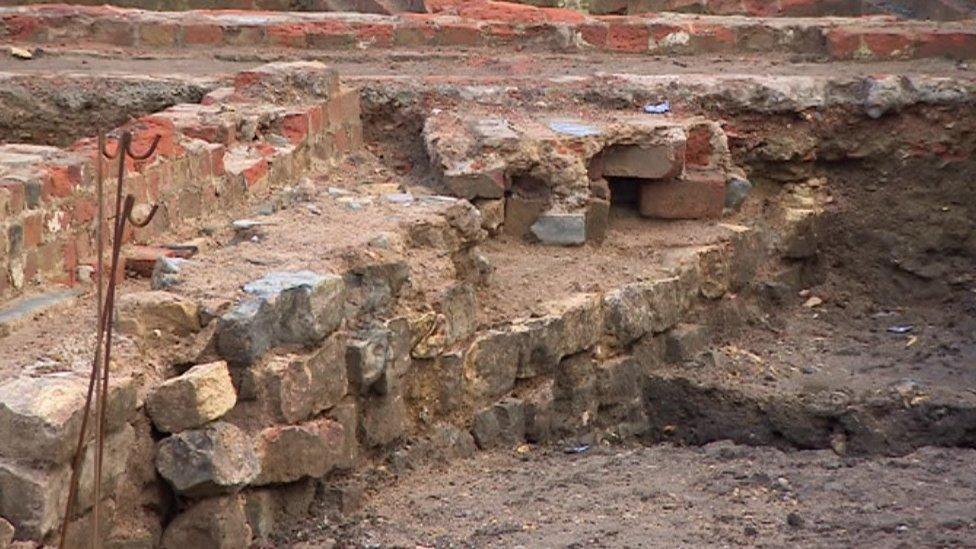Norman castle site to 'be complete again' after donation
- Published
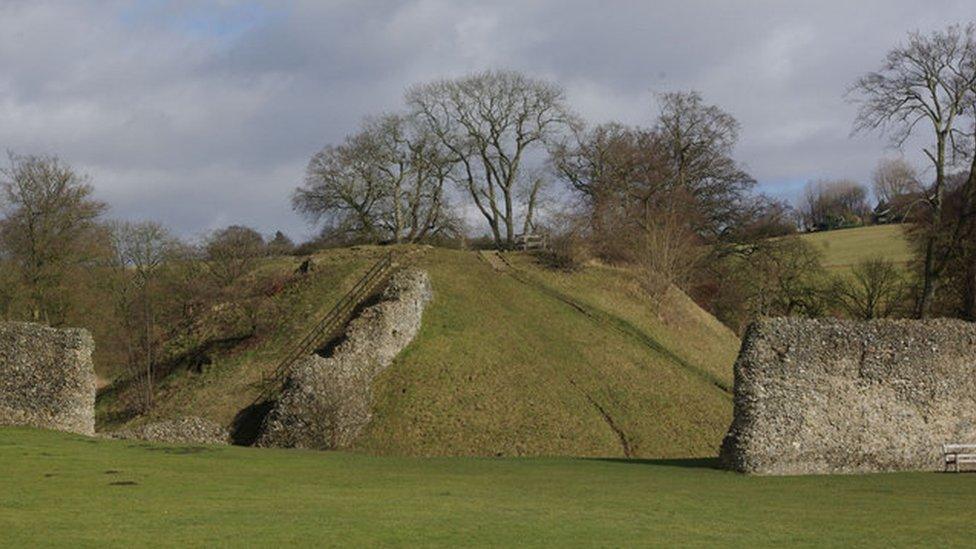
Berkhamsted Castle is a Scheduled Ancient Monument and one of English Heritage's 400 historic sites
The site where William the Conqueror received the English surrender is to become "complete" once more after a firm donated adjacent land.
Berkhamsted Castle, Hertfordshire, was one of the most important early Norman castles.
A pharmaceutical firm has donated three acres (1.2 hectares) to Berkhamsted Castle Trust, plus £25,000 to maintain the "national asset".
The trust said it would now work to "make it a coherent site again".
The donated land on the castle's eastern perimeter came into Mallinckrodt Pharmaceuticals' ownership 50 years ago and has primarily been used for sheep grazing.
Company president Mark Trudeau said the donation "makes a site rich in English history complete once again".
He added: "Visitors to Berkhamsted Castle will now have a full picture of the original castle site and will gain additional access to explore nearly 1,000 years of history," he said.
Construction of the motte and bailey castle began in December 1066 after William's victory at the Battle of Hastings.
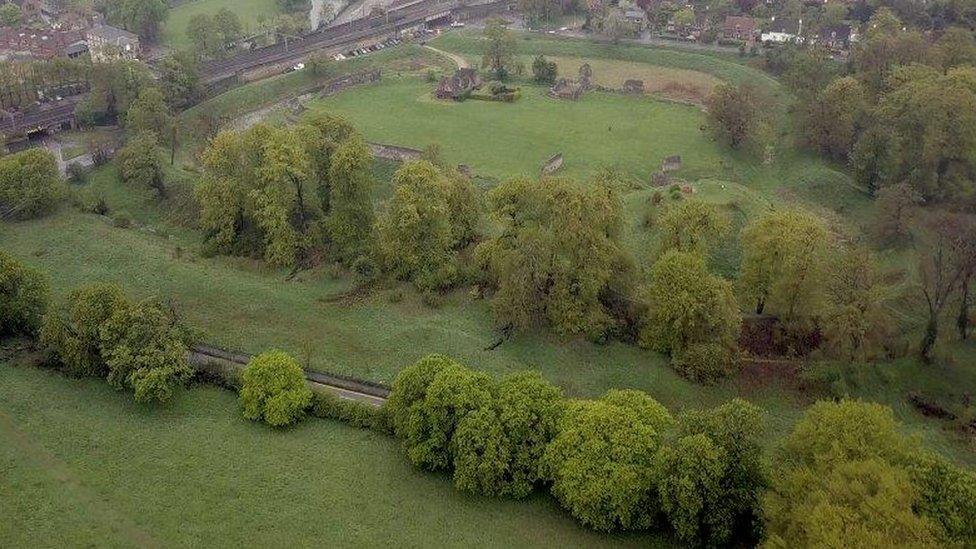
The donated land is outside the double moat next to the road on the other side
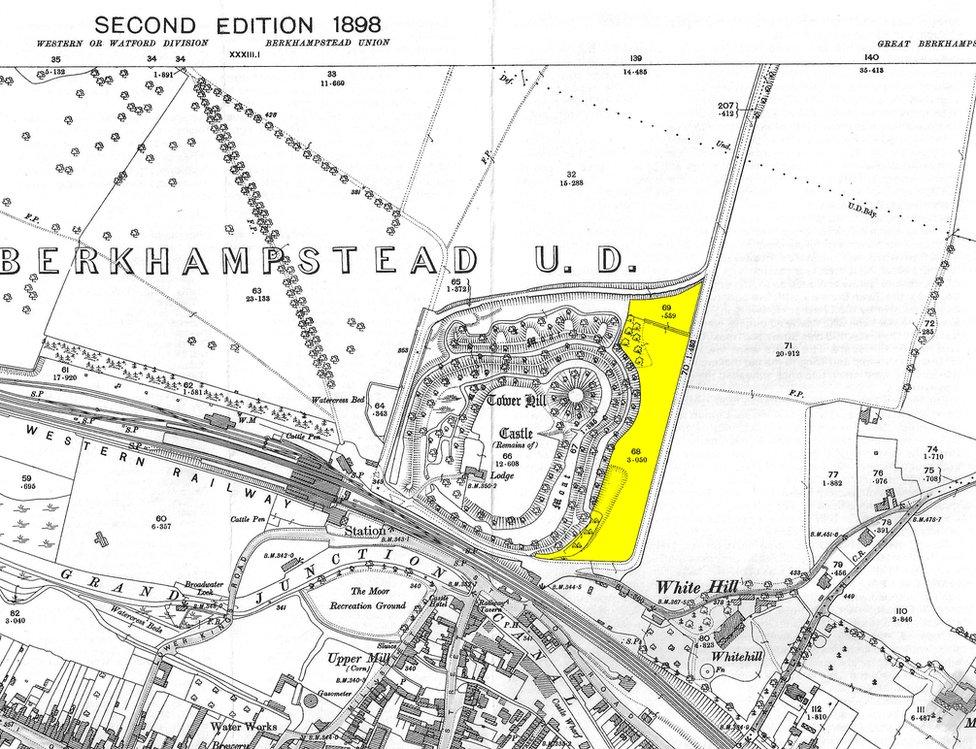
Three acres (1.2 hectares) of land along the Eastern perimeter of the site has been donated
In 1216, in the aftermath of the Magna Carta, Prince Louis of France besieged the castle, where King John's widow was in residence, for two weeks.
It is thought the earthworks on the donated land were built as augmented defences in view of the impending threat.
English Heritage, which manages the site, has supported the new trust, established by local volunteers.
Trust chairman Adrian Barham, said the donations were "fantastic" and would help present the castle "as a whole, as originally intended" for the first time in about a century.
"This is quite a fundamental part of the nation's history and a forgotten part," he said.
"We must make sure that Berkhamsted Castle is more coherently explained and better presented."
He said the challenge now was to "reintegrate the site" and make it "fit for people to access".
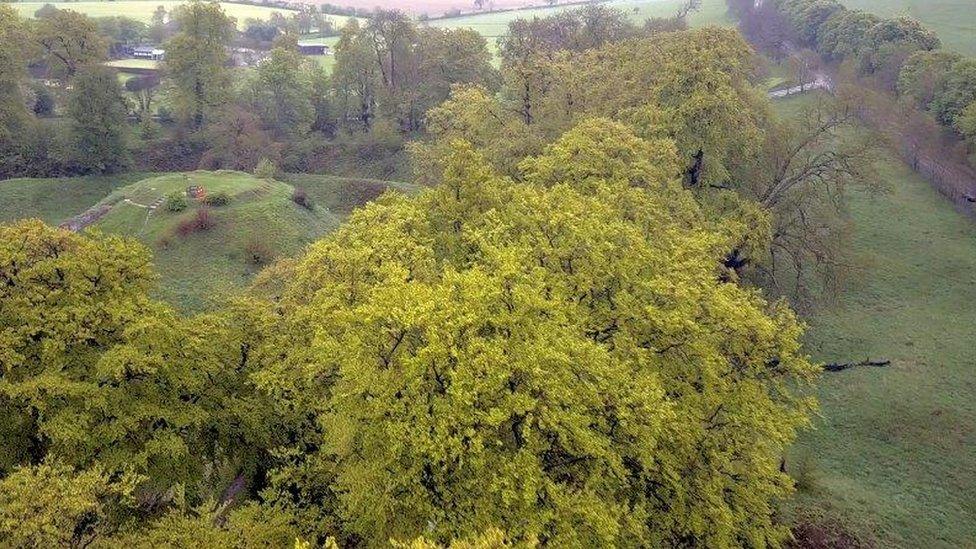
There is currently no pedestrian path from the main castle site to the land on the other side of the double moat (on the right)
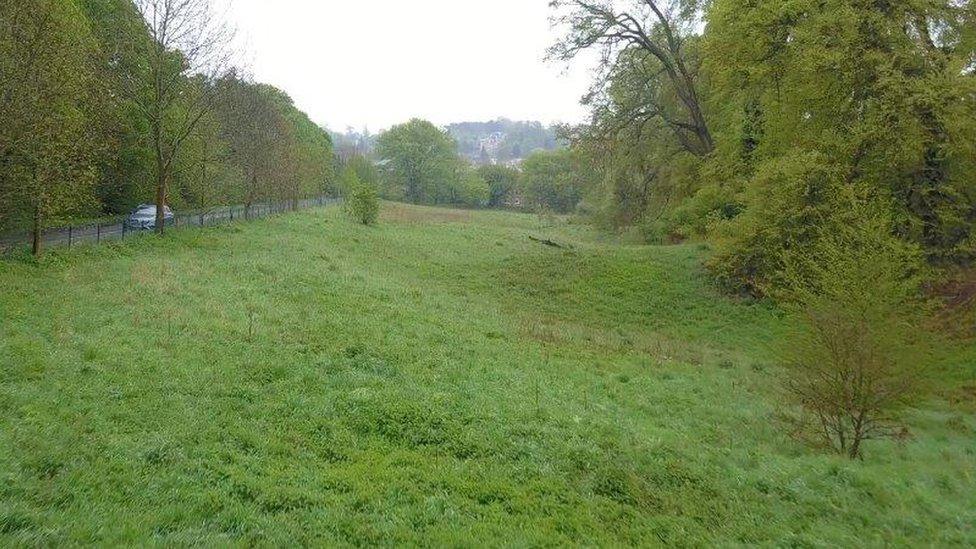
The land containing medieval earthworks has mainly been used for grazing sheep
- Published21 April 2018
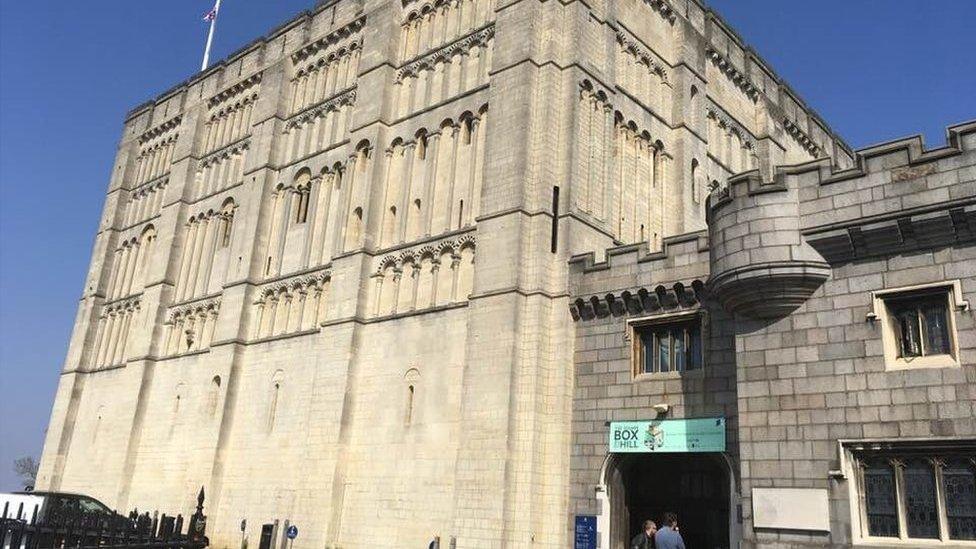
- Published9 February 2017
